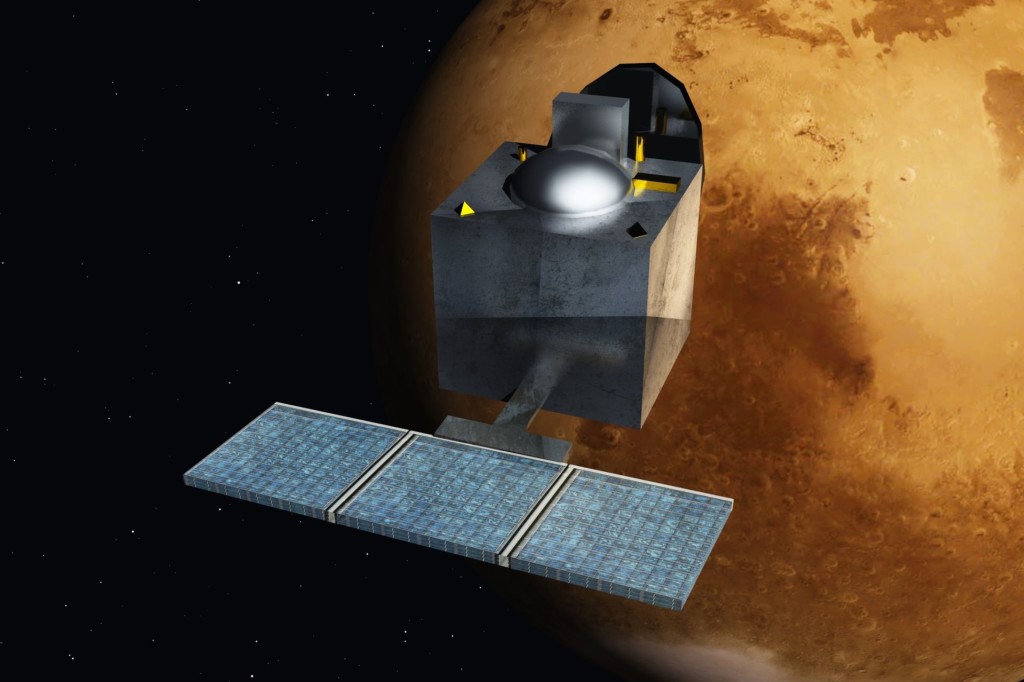
Artist’s rendering of the MOM orbiting Mars
Mission Type: Mars orbiter
Operator: ISRO
Website: isro.org/pslv-c25-mars-orbiter-mission
Mission Duration Planned: 6 months
Extension: 6 months
Elapsed: 1 year, 4 months and 29 days
Manufacturer: ISAC
Launch Mass: 1,337 kg (2,948 lb)[3]
Power: 840 watts
Launch Date: 5 November 2013, 09:08 UTC
Rocket: PSLV-XL C25
Contractor: ISRO
Marking India’s first venture into the interplanetary space, MOM will explore and observe Mars surface features, morphology, mineralogy and the Martian atmosphere. Further, a specific search for methane in the Martian atmosphere will provide information about the possibility or the past existence of life on the planet.
The enormous distances involved in interplanetary missions present a demanding challenge; developing and mastering the technologies essential for these missions will open endless possibilities for space exploration. After leaving Earth, the Orbiter will have to endure the Interplanetary space for 300 days before Mars capture. Apart from deep space communications and navigation-guidance-control capabilities, the mission will require autonomy at the spacecraft end to handle contingencies.
Once India decided to go to Mars, ISRO had no time to lose as the nearest launch window was only a few months away and it could not afford to lose the chance, given the next launch would present itself after over 780 days, in 2016. Thus, mission planning, manufacturing the spacecraft and the launch vehicle and readying the support systems took place swiftly.